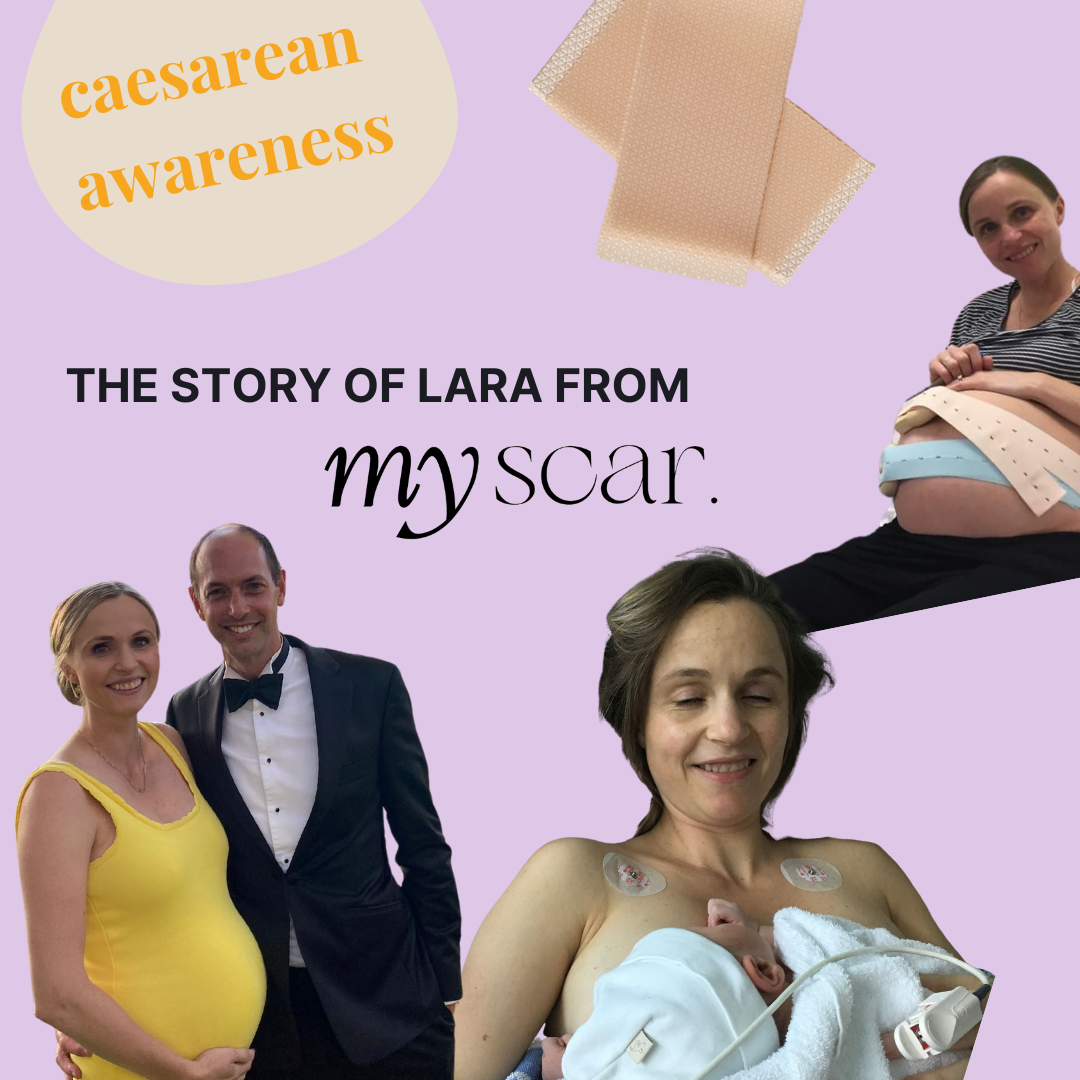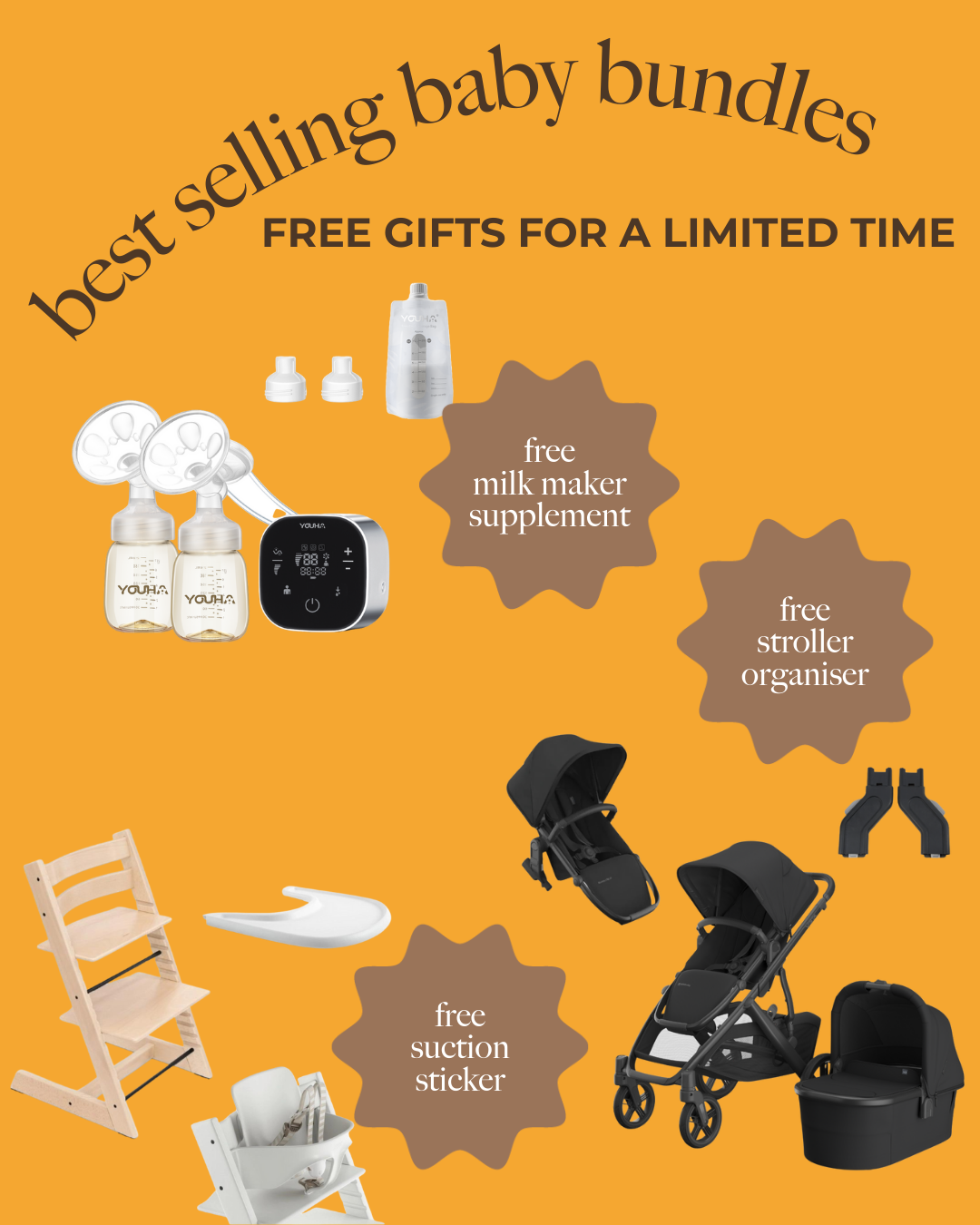
Caesarean Awareness Month - Q + A with myscar. Founder Lara Hofer.
Hey Lara. Thanks for chatting to us! Can you tell us about you & your family. We’d love to know who Lara Hofer is!
Hello everyone. Firstly, thank you Anna for creating this beautiful space for people like myself to share their story. Its generous people like Anna that make such a big difference to new brands like myscar.
So a bit about me, I am Mum of 3 children (Arthur 5, Piper 3 and Leo 1) and wife to Wayne. I grew up in Hamilton, moved to study Law and Commerce in Dunedin, and then spent time working and living in Milan, Auckland, London and the Turks & Caicos before returning back to Hamilton to settle down.
I am a lover of coffee, travel, children & pilates.
What is your favourite part of being a parent?
The kisses and cuddles. I try and get as many as I can a day, because I know when they grow-up they won’t give them to me as readily!
What is your favourite parenting hack?
Frozen blueberries in hot porridge to cool it down quickly.
In the mornings our kids wake up hangry! It is always a race to try and get them fed as quickly as possible. In the winter months, when it’s colder they like porridge. Trouble is, porridge is usually very hot once cooked and needs many minutes to cool. We generally don’t have those minutes before meltdown 1,2 and 3 kick off. We discovered adding frozen blueberries to hot porridge rapidly cools down the temperature of the porridge. It’s a game changer in our house.
What did you do for work prior to starting myscar.?
I was a commercial litigation lawyer. My first job was as a solicitor in Auckland at Bell Gully, I then moved to London to work as an Associate for an American founded firm called Hausfeld and finally to a Litigation Funder, Woodsford Litigation Funding before having my first child, Arthur.
What led you to starting myscar.?
The idea of myscar. comes directly from my own experience post caesarean section. I experienced a dearth of postnatal care for caesarean section mothers. While birth via caesarean section makes up approximately 30% of births in New Zealand, the rehabilitation of caesarean section scars was largely non-existent.
I think the best way to describe myscar. is providing women with an option that I never readily had - a non-invasive proven option to rehabilitate their scar in the best way possible.
Given myscar’s foundation, please tell us a bit more about your births.
To summarise, my labour with Arthur was one complication after another. After a very long labour and just when we thought a vaginal birth was achievable at around 8-9cm dilated, things went downhill. The room flooded with medical staff, including staff I had not met which was overwhelming to say the least. I was advised that my baby was in serious distress, and I needed to be taken off for a caesarean section right then. I was told there were serious concerns for the life of my child. An average 45-minute procedure took over 2 hours and the doctors estimated I lost almost 30% of my blood. I was unable to hold my son until I was back in the recovery room. Traumatic to say the least…
Given all the various complications I experienced during Arthur’s birth, I was advised to seek the care of a private obstetrician for future births. I was under the care of Kira Brent of Origins (Mt Eden, Auckland) for both Piper and Leo’s birth. A key part of International Caesarean Awareness month is to bring awareness to vaginal birth after caesarean (VBAC). It is possible. While I kept an open mind to the possibility a caesarean could eventuate, I managed to achieve a VBAC with both Piper and Leo. Thankfully both these births were straightforward, I was lucky.
How was your caesarean section recovery?
In short, incredibly tough all round. It took me many months to recover physically and mentally.
Physically, I couldn’t get up out of bed the next day and walk around, like the doctors and midwives encourage. I felt too faint and heavy and like my tummy was going to fall onto the floor. Part of that was obviously due to the amount of blood I had lost. My first shower, days later, involved me having to sit on a chair while my husband washed me. The pain around the incision site was excruciating even with all the medication I was given. Not to mention attempting to breastfeed. Arthur would often kick out during a feed directly onto my incision. It was so frequent and painful that I researched ceaselessly until I found the appropriate breastfeeding aid for caesarean mothers. Every day I got a little better and a little stronger, but it was a long road. And then you have the mental side…
I felt to my absolute core that I had failed, my body had failed. I couldn’t understand why I couldn’t birth vaginally; my mum had six children - all vaginal births. All my friends at this stage had had vaginal births. What did I do wrong? On top of the failure mentality, I also suffered from mild PTSD. The major symptoms for me were insomnia and when I did sleep, I had recurring nightmares waking up covered in sweat. I would often have flashbacks to birth and struggled with attachment. These symptoms lasted about 8 months, and I realise now I am lucky because for some it’s lifelong. A trigger for me is still birth scenes on TV, so this is something I actively avoid.
If you wish to read more about my caesarean section birth and recovery, Bountiful has published my story in more detail here. It can also be found on our website here.
Did you feel you had adequate support from those around you?
Yes, Wayne’s firm allowed him 6 weeks of parental leave and he took some additional annual leave too. His firm also allowed him to work from home on the matters that he couldn’t hand off to anyone. In total, I recall he had around 12 weeks of not having to go into work. This enabled him to care for me and Arthur. I also had my mother (a registered nurse, ex-plunket nurse and now nurse at the Waikato Family Centre), not to mention my Dad, sisters and brother and wider extended family. I was fortunate.
What do you think could be improved when it comes to how we manage/treat caesarean sections?
The narrative. The narrative around caesarean sections (planned or unplanned) needs to change. It is not the easy way out or an inferior way to give birth. Too often, people refer to a vaginal birth as a ‘natural’ birth (and I am previously guilty of it too), but it only makes a caesarean section birth sound like the opposite. Birth is birth. I support the choice of the individual and doing whatever is right for them. It is their body and baby after all. I encourage everyone to try be more supportive and less judgemental. I know that my mental recovery journey may not have been a road so difficult for me to traverse had I been surrounded with more positivity and awareness around caesarean sections prior to my experience.
What is one piece of advice you’d give to someone recovering from a caesarean section?
It sounds simple, but can be difficult with a new baby - Rest. Rest when you can. It is major surgery after all. You will most likely feel different, perhaps weaker, post caesarean and may be in a rush to get back to feeling your normal self. I would suggest don’t rush, rest.
Tell us a bit about myscar. and how the product works?
After years of research, development and working closely with preferred manufacturers, I launched myscar. (a wholly New Zealand owned and operated company) in December 2022. myscar. is the only NZ specialist retailer of entirely 100% medical grade silicone strips.
All myscar. silicone strips are ultra-thin, breathable, flexible, durable, and soft. Made with premium silicone technology, they are clinically proven to prevent and treat abnormal scars. They are also Medsafe registered and FDA approved.
myscar. silicone strips are designed to be used as soon as the incision has healed (around 6-8 weeks post caesarean / operation). The strips can then be worn by mothers as they go about their normal day. Put simply, myscar. silicone strips provide slight pressure directly to the scar, mimicking the natural barrier function of healthy skin, helping the skin to retain moisture better. The increased hydration ensures that the damaged skin / scar recovers quicker, reducing the scar's appearance and restoring skin to a more natural colour and texture.
There are two different types of myscar. Caesarean silicone strips, what is the difference and how do women pick between the two?
*The Original* and *The Active* Caesarean silicone strips are the two types of caesarean silicone strips we currently offer. Simply, *The Active* is a washable, slightly thicker version of *The Original*. All our strips are reusable for up to 2 weeks and offer the gold standard in scar rehabilitation.
*The Original* are preferred by mothers who:
+ want our thinnest, most flexible strip
+ appreciate with a thinner strip, slightly more care is needed
+ don’t have particularly sensitive skin
+ don’t see a need to wash their strip (as these strips are not washable)
+ only wish to take their strip off once a day
*The Active* are preferred by mothers who:
+ want a slightly thicker, more durable strip
+ have more sensitive skin
+ (as the name suggests) are more active and may exercise with the strip on
+ wish to wash their strip regularly
+ want the flexibility to take their strip off more than once a day
What’s next for myscar.?
We have recently expanded into a wider product range, *The Mini* Face & Body silicone strips. As the name suggests, they are designed for smaller face and body scars (strips are 7.5cm X 4cm). They come in a 4-month supply (8 strips per box). They can be cut to size and are washable. The range caters for women, and now men and children (2years+). This expansion has come much sooner than we thought, however we couldn't ignore all the enquiries we were getting for a more varied product. While my passion comes from empowering caesarean section mothers in their recovery, it feels good to be able to widen our product offerings and help more people. It is likely we will continue to expand our product offerings, however, all in good time.
Thanks for chatting to us, Lara! You can shop the myscar. range here.










Leave a comment
This site is protected by hCaptcha and the hCaptcha Privacy Policy and Terms of Service apply.